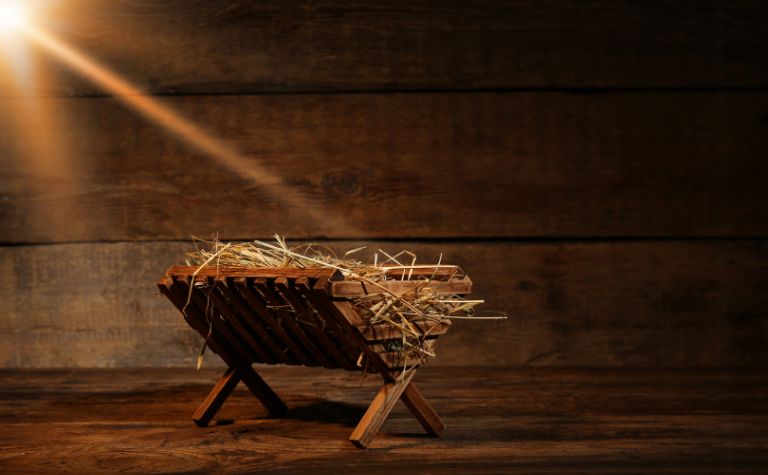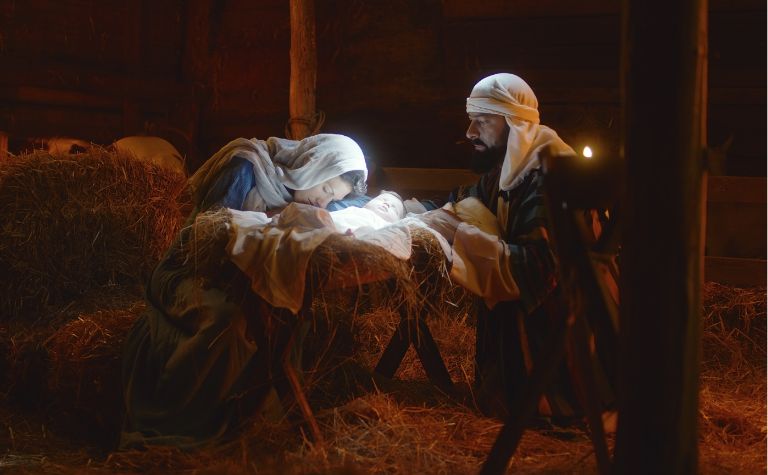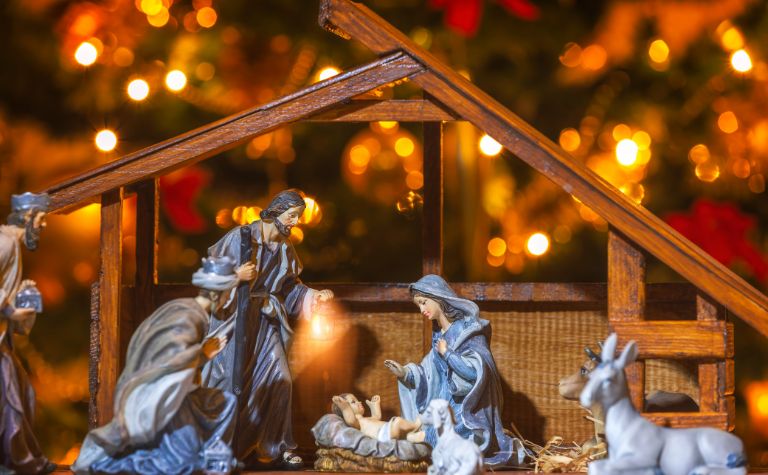You may have seen a manger in a farm setting, filled with hay for livestock, or perhaps as a centerpiece in a Nativity scene during the Christmas season.
Understanding the uses and significance of a manger can offer valuable insights into various aspects of life, from agriculture and animal care to biblical and cultural traditions.
In this article, we’ll explore the multiple uses of a manger, and its historical background.
Whether you’re a farmer, a history enthusiast, or someone curious about this age-old structure, this guide aims to answer all your questions.

The Importance of Mangers in the Bible
The manger holds a unique and significant place in the Bible, particularly in the Christian tradition.
While its primary function as a feeding trough for animals is well-known, its role in biblical narratives elevates it from a simple farm implement to a symbol of divine intervention and humility.
The Nativity Scene
The most iconic mention of a manger in the Bible is undoubtedly in the Nativity story, which recounts the birth of Jesus Christ.
According to the Gospel of Luke, Mary and Joseph were unable to find lodging in Bethlehem, and as a result, Jesus was born in a stable.
He was then laid in a manger, as there was no room at the inn.
This humble setting for the birth of the Savior has profound theological implications. It reflected the humility and simplicity that are at the core of Christian teachings.
Interpretation
The manger’s presence in the Nativity story has led to various interpretations.
For many, the manger represents God’s willingness to enter the world in the most humble of circumstances.
It serves as a reminder that greatness can come from simplicity, and that divine miracles often occur in the most unexpected places.
Impact
The manger’s role in the Nativity has had a lasting impact on Christian culture and religious practices.
During the Christmas season, Nativity scenes featuring a manger are commonly displayed in churches, homes, and public spaces.
These displays serve to remind people of the true meaning of Christmas and the humble beginnings of Jesus Christ.
Lessons
The manger in the biblical context also offers valuable lessons in humility, compassion, and the importance of recognizing the divine in everyday life.
Its presence in the Bible serves as a teaching tool, encouraging believers to embrace simplicity and humility as virtues.

The Historical Background of mangers
The manger, a humble yet enduring structure, has a rich history that spans across cultures and time periods.
Originating from the Latin word “mangere,” which means “to eat,” mangers have been used for centuries as feeding troughs for livestock.
These simple structures have been an integral part of agricultural practices, helping farmers and herders provide sustenance to their animals in an organized manner.
But the history of the manger isn’t confined to farms and barnyards.
In ancient cultures, mangers were often made from readily available materials like wood, stone, or clay.
Their basic design—a rectangular or circular container, often elevated off the ground—has remained largely unchanged over the years, a testament to its functional effectiveness.
Whether serving as a practical tool in animal husbandry or as a symbol of spiritual significance, the manger has stood the test of time.
Its multi-faceted role in human history makes it more than just a feeding trough; it’s a cultural and historical icon that continues to be relevant today.

Common Uses of a Manger
The manger, while simple in design, serves a variety of purposes that extend beyond just a feeding trough for animals.
Its versatility is one of the reasons why it has remained a staple in different settings, from farms to religious events. Below, we explore the most common uses of a manger.
For Feeding Animals
The primary and most obvious use of a manger is for feeding livestock.
Whether you’re caring for cattle, horses, sheep, or goats, a manger provides a centralized location where animals can eat.
This not only makes it easier for the caretaker to manage feeding times but also helps in reducing food waste.
The elevated design of many mangers keeps the feed off the ground, making it less likely to be contaminated.
For Storage
While not its primary function, a manger can also be used for storage, particularly in a farm setting.
Some people use mangers to store hay, straw, or even farm tools.
Its sturdy design makes it capable of holding a reasonable amount of weight, making it a versatile addition to any farm or stable.
Decorative Uses
In recent years, the manger has found a place in home and garden decor.
Its rustic appearance makes it a popular choice for those looking to add a touch of country charm to their surroundings.
Whether used as a planter or as a unique display piece, the manger has an aesthetic appeal that goes beyond its functional uses.
Understanding the various ways a manger can be used can help you appreciate its versatility and importance in different aspects of life.
The Basic Structure of a Manger
When it comes to the basic structure of a manger, simplicity and functionality are key.
At its core, a manger is essentially a container designed to hold food or water for animals.
While the design may vary depending on its intended use and the type of livestock it serves, the fundamental elements remain the same.
Materials Used
Traditionally, mangers were made from wood, as it was a readily available and easy-to-work-with material.
However, modern mangers can be made from a variety of materials, including:
- Wood: Still popular for its rustic charm and natural look.
- Metal: Often used for its durability and ease of cleaning.
- Plastic: Lightweight and resistant to rot, but may not be as durable as other materials.
Design Features
The design of a manger usually consists of a rectangular or circular basin that holds the feed.
Some mangers are elevated off the ground on legs or a stand, while others may be attached to a wall or fence.
The elevation helps to keep the food clean and minimizes waste.
Size and Dimensions
The size of the manger will depend on the type and number of animals it is intended to serve.
For smaller animals like sheep or goats, a smaller manger may suffice.
For larger livestock like cattle or horses, a more substantial structure is necessary.
Additional Features
Some mangers come with added features like dividers to separate food types or to serve multiple animals at once.
Others may have a covering to protect the food from the elements, especially useful in outdoor settings.
Understanding the basic structure of a manger is crucial when it comes to selecting the right one for your needs, as well as for its maintenance.
Related Questions
The birth of Jesus of Nazareth is one of the most iconic events in the Bible and an essential date on church calendars. Christians love the story of Jesus, Mary, and Joseph traveling to Bethlehem,...
The virgin Mary, the mother of Jesus, is one of the most fascinating people in the Bible. For 2,000 years, people of different eras and cultures have marveled at her faith in God. Mary's story in the...
